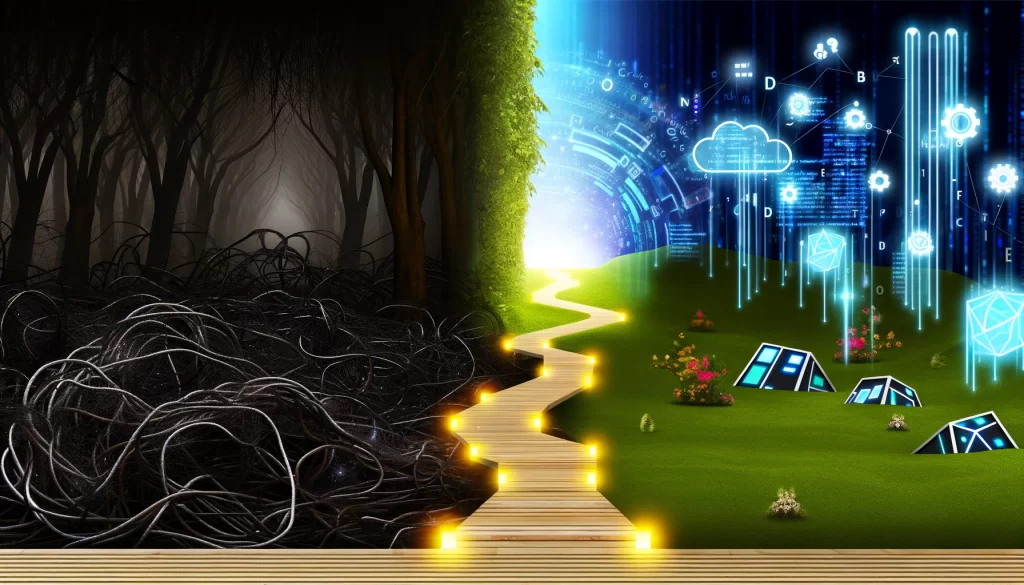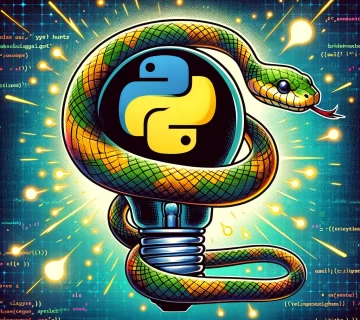In the vast and ever-evolving landscape of technology, programming stands as a beacon of creation and innovation. At its core, programming is not just about writing lines of code; it’s about solving problems, thinking creatively, and continually pushing the boundaries of what’s possible. To excel in programming, one must learn to think like a programmer—a journey that is as rewarding as it is challenging.
Embrace the Programmer’s Mindset
Imagine standing before a complex puzzle, where each piece represents a snippet of code. The excitement lies not in the simplicity of the task but in the thrill of piecing together a solution that is both elegant and efficient. This is the heart of the programmer’s mindset: viewing problems as opportunities to learn, grow, and innovate. Programmers are perpetual students of the digital world, always ready to explore new languages, tools, and technologies to enhance their craft.
Dive Into Problem Solving
At its essence, programming is problem-solving. Each line of code is a step towards a solution, a bridge over the chasm of challenges. Embracing problems as opportunities means shifting your perspective to see beyond immediate obstacles and focusing on the path to the solution. It’s about asking the right questions, not just finding the quick answers.
Cultivate Continuous Learning
The technological landscape is a river, constantly flowing and changing its course. Staying afloat means embracing continuous learning, diving into new programming languages, and exploring emerging technologies. The willingness to learn is what keeps a programmer agile and adaptable, ready to tackle the next challenge that comes their way.
Harness Logical Thinking and Attention to Detail
Programming demands a logical approach, breaking down complex problems into manageable parts. It’s about understanding the underlying patterns and structures that govern the digital world. Attention to detail is paramount, as even the smallest error can derail an entire project. This meticulous nature is what ensures excellence and precision in every line of code.

Building Your Programmer Toolkit
Develop Analytical and Critical Thinking Skills
Analytical skills allow you to dissect a problem and understand its components, while critical thinking empowers you to evaluate various solutions and choose the most effective one. These skills are the tools with which you can carve out innovative solutions and refine your approach to coding challenges.
Embrace Creativity and Effective Research
While logic and analysis are crucial, creativity in coding opens the door to innovative solutions and groundbreaking ideas. The ability to think outside the box, combined with effective research skills, enables you to draw inspiration from a vast repository of knowledge and experience found in coding communities, forums, and documentation.
Strategies for Sharpening Your Programmer’s Mind
Master the Art of Problem Decomposition
The key to tackling complex problems is breaking them down into smaller, more manageable pieces. This approach not only makes the problem more approachable but also allows for more straightforward debugging and testing. It’s like solving a puzzle, one piece at a time, until the bigger picture comes into view.
Practice Through Pseudocode and Regular Coding Challenges
Before diving into code, sketch out your ideas in pseudocode. This step helps clarify your thought process and lays a foundation for your code. Moreover, engaging with regular coding challenges on platforms like LeetCode or GitHub fosters a habit of practice and perseverance, further honing your skills and resilience.
Learn From Failure: The Stepping Stones to Mastery
Every bug, every error, and every failure is a lesson in disguise. The journey of thinking like a programmer is paved with trials and errors, each providing a unique opportunity to learn and grow. Embrace these moments, for they are your stepping stones to mastery.
Real-World Applications: Where Theory Meets Practice
Thinking like a programmer transcends beyond the confines of your computer screen. It’s about applying a structured, analytical approach to every aspect of project development, troubleshooting, and team collaboration. This mindset is invaluable, whether you’re debugging a complex piece of software or working with a team to bring a visionary project to life.
The Path Forward
The journey to think like a programmer is a journey of continuous growth, learning, and adaptation. It’s about embracing the challenges, celebrating the failures, and basking in the triumphs. As you embark on this journey, remember that the most significant breakthroughs often come from the most challenging problems.
So, to all aspiring programmers and seasoned coders alike, I invite you to embrace this mindset. Dive into the world of coding with curiosity, determination, and an unyielding spirit of exploration. The path to thinking like a programmer is before you, filled with endless possibilities and opportunities for innovation.
Let’s code a brighter future together.





No comment